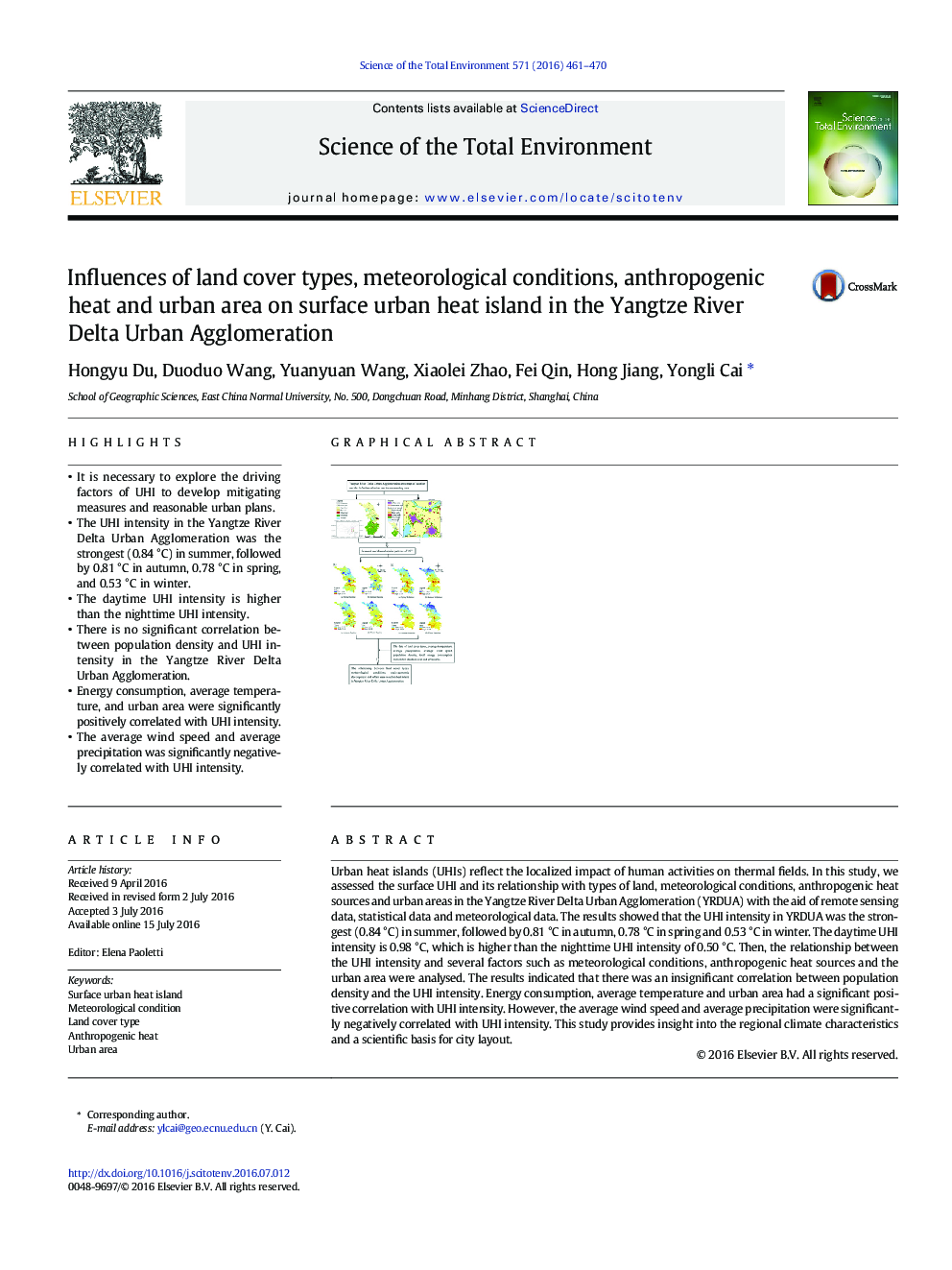| کد مقاله | کد نشریه | سال انتشار | مقاله انگلیسی | نسخه تمام متن |
|---|---|---|---|---|
| 6320421 | 1619720 | 2016 | 10 صفحه PDF | دانلود رایگان |
- It is necessary to explore the driving factors of UHI to develop mitigating measures and reasonable urban plans.
- The UHI intensity in the Yangtze River Delta Urban Agglomeration was the strongest (0.84 °C) in summer, followed by 0.81 °C in autumn, 0.78 °C in spring, and 0.53 °C in winter.
- The daytime UHI intensity is higher than the nighttime UHI intensity.
- There is no significant correlation between population density and UHI intensity in the Yangtze River Delta Urban Agglomeration.
- Energy consumption, average temperature, and urban area were significantly positively correlated with UHI intensity.
- The average wind speed and average precipitation was significantly negatively correlated with UHI intensity.
Urban heat islands (UHIs) reflect the localized impact of human activities on thermal fields. In this study, we assessed the surface UHI and its relationship with types of land, meteorological conditions, anthropogenic heat sources and urban areas in the Yangtze River Delta Urban Agglomeration (YRDUA) with the aid of remote sensing data, statistical data and meteorological data. The results showed that the UHI intensity in YRDUA was the strongest (0.84 °C) in summer, followed by 0.81 °C in autumn, 0.78 °C in spring and 0.53 °C in winter. The daytime UHI intensity is 0.98 °C, which is higher than the nighttime UHI intensity of 0.50 °C. Then, the relationship between the UHI intensity and several factors such as meteorological conditions, anthropogenic heat sources and the urban area were analysed. The results indicated that there was an insignificant correlation between population density and the UHI intensity. Energy consumption, average temperature and urban area had a significant positive correlation with UHI intensity. However, the average wind speed and average precipitation were significantly negatively correlated with UHI intensity. This study provides insight into the regional climate characteristics and a scientific basis for city layout.
158
Journal: Science of The Total Environment - Volume 571, 15 November 2016, Pages 461-470
